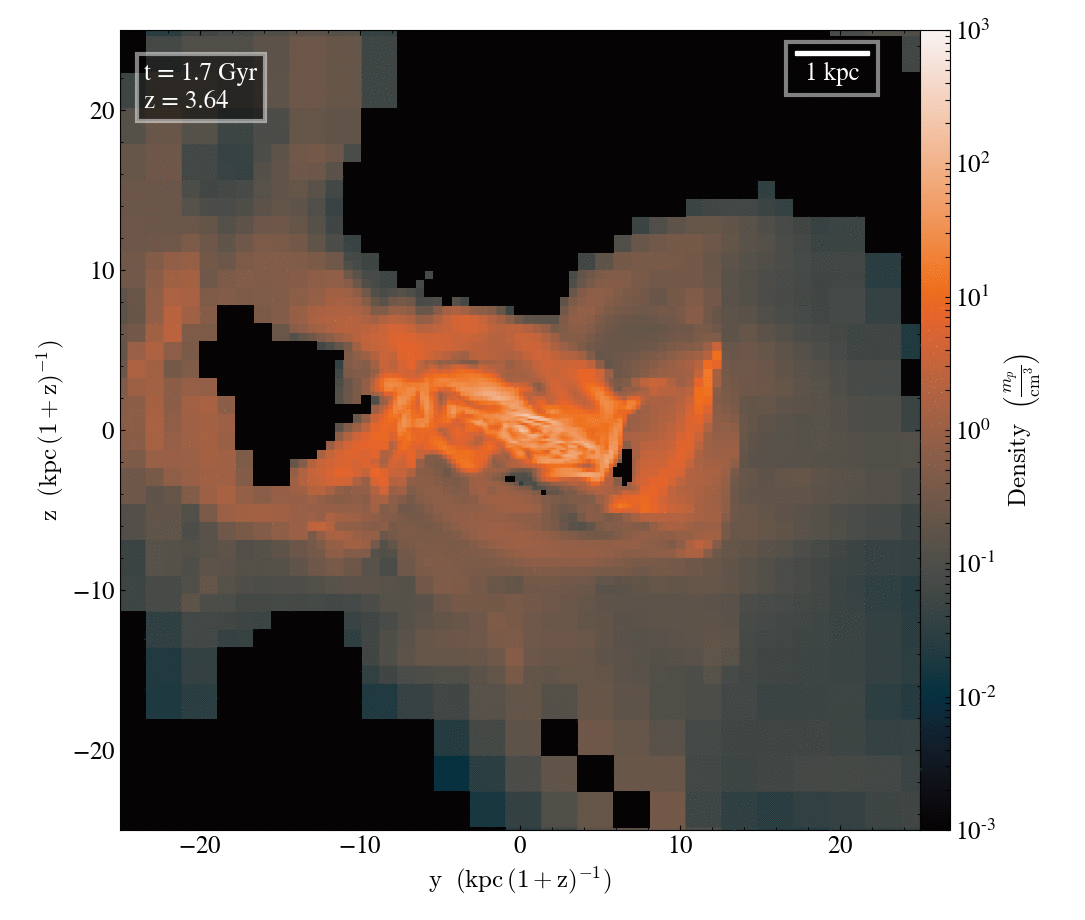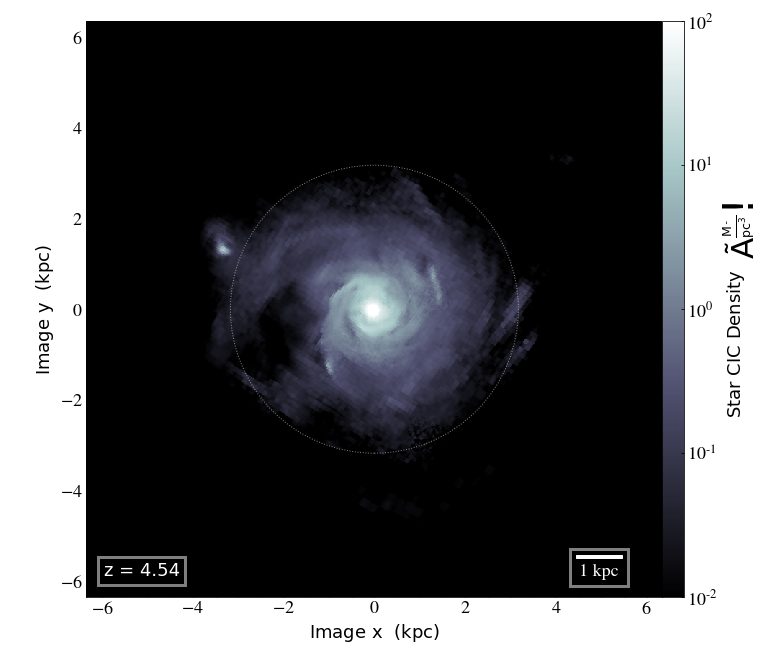How does the cosmic web impact galaxy formation?
show live on
https://slides.com/corentincadiou/deck-1/live


Corentin Cadiou — PhD student
In collaboration with Marcello Musso, Yohan Dubois, Christophe Pichon, …
Let's build a galaxy!
An insight on galaxy formation using numerical simulations.


We need more mass!
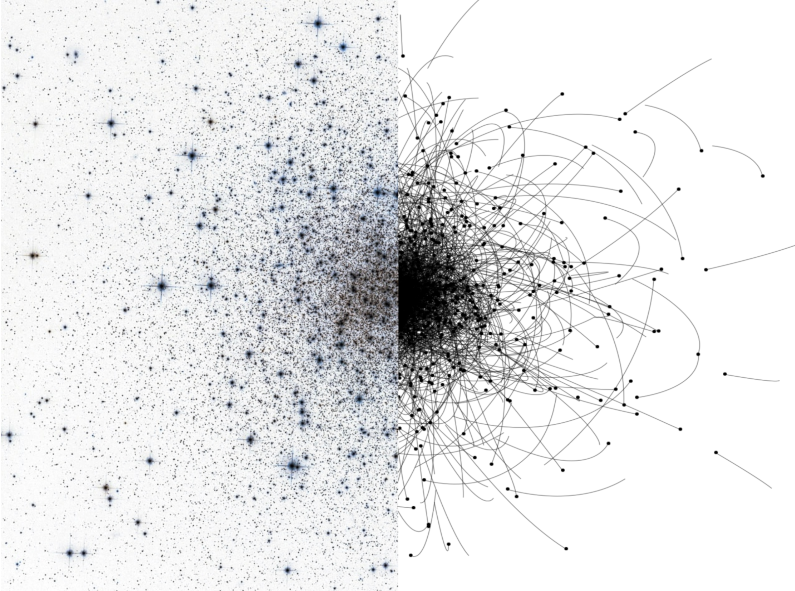
"A Galaxy is a bunch of stars..."
"located in a DM halo..."
~10kpc
~100kpc


"A Galaxy is a bunch of stars..."
"located in a DM halo..."
~100kpc

"embedded in the cosmic web"
Text
Oh I forgot to say...
These stuff evolve with time!

Cooling
Heating
- UV background (z~8)
- SN feedback
- compression (hydro)
- shocks
Warm diffuse gas
Cold diffuse gas
Virial shock

Where does the disk component come from?
The cold phase has a coherent angular momentum structure
The warm phase does not have a coherent AM structure
To understand AM buildup → understand cold accretion!
Usual values:
(Quick) Introduction
A very biased view on galaxy formation
Galaxy properties
Bulge
Red or blue?
Disk
All the properties vary with cosmic time…
Do they vary with spatial location?
Galaxies & the cosmic web
Halo model: galaxy properties are inherited from their parent halo + local density (~no effect of the cosmic web)
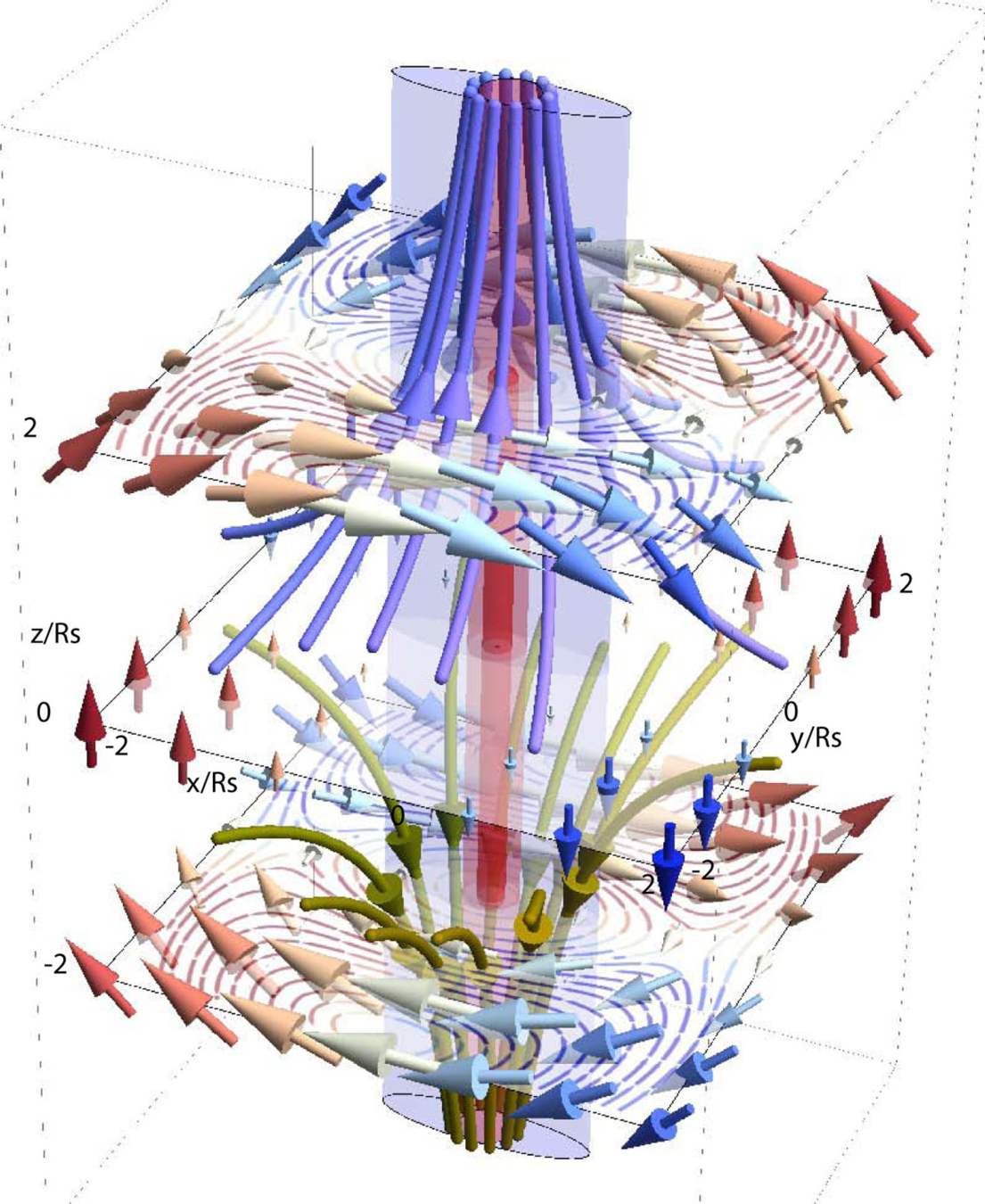
-
Kaiser bias: large scale overdensities bias halo density
(Kaiser 84, BBKS 86)
- Spins align with the cosmic web
(Tempel&Libeskind 13, Codis+15, Chisari+15, ...)
-
Galaxy properties are modulated by the cosmic web
(Laigle+17, Kraljic+18, Musso, Cadiou+18)


We have to take into account the spatial modulation induced by the cosmic web
How do galactic and DM halo scales couple to the large scale anisotropies of the cosmic web?
The Excursion Set Theory
Excursion Set Theory
Galaxy properties & evolution from initial conditions
⇒ Find largest mass that will collapse by z at given location

| Simulation | Theory |
|---|---|
| M | R |
| z |
Spherical collapse model:
Structure of size R will collapse at z iff
R
Excursion Set Theory
Galaxy properties & evolution from initial conditions
⇒ Find largest mass that will collapse by z at given location
Large mass Small mass
Early collapse
Late collapse
Constrained Excursion Set Theory

+

``How does the cosmic web biases the excursion and halo properties?´´
The Cosmic Web
How to encode the cosmic web?
Nodes (maxima of density)
Saddle point (center of filament)

Compressing the spatial information
1
2
3
Describe the critical points only
Compressing the spatial information

Height: determined by (over-)density
Curvature: controlled by (traceless) tidal tensor
Poisson equation
Results
Results



Direction of void
Direction of filament
In filaments, halos are...
- more massive
- form later (at fixed mass)
- accrete more (at fixed mass)
... than in voids

(Musso, Cadiou et al 2018)

(Kraljic+2018)
Results
The relevant parameter for quantifying the anisotropy is:


Observation (in simu)
v/σ residuals at fixed dens + mass
Theory

But... why?

The filament constrains
- the density
- the variance of the density

Void Filament Void

Conclusion
Conclusions...
- New model built, room for lots of improvement
- Classical results recovered
- Help to uncover new results
...and perspectives
Towards a more comprehensive halo model
- How do galaxy respond to large-scale anisotropies?
⇒ simulations (WIP) - Take into account non spherical collapse (WIP)
- More subtle quantities:
- halo merger rate (WIP)
- halo concentration
- ... star formation rate?
Thank you
New Horizon simulation, Dubois+ in prep
Backup Slides

Excursion set at fixed final mass in different environments

Excursion set at fixed final mass in different environments

Effect of AGN feedback
The Formation of Disk Galaxy
! WIP !
Simulation Setup
- suite of zoom-in simulations (~3-5), RAMSES (Teyssier 2002)
- Δx = 35pc, Mstar = 1.1 10⁴ M☉ Mhalo=10¹² M☉
- Turbulent star formation (Kimm+17, Trebitsch+17)
- Mechanical feedback (Kimm+15)
- AGN formation with spin-regulated efficiency (Dubois+12,+14)
- 30,000,000 tracer particles (~10/cell, 0.5/star)*
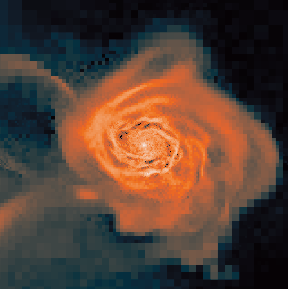
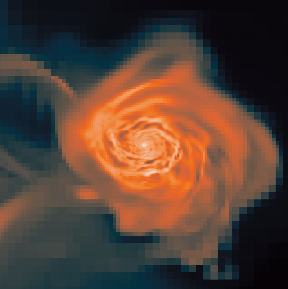
*See Cadiou+18
Gas density
Tracer density
Simulation Setup
How did the disk acquire its AM?
Requires the knowledge of the Lagrangian evolution of the gas
⇒ now possible using tracer particles
Let look at the filamentary accretion of cold gas at z≥2
